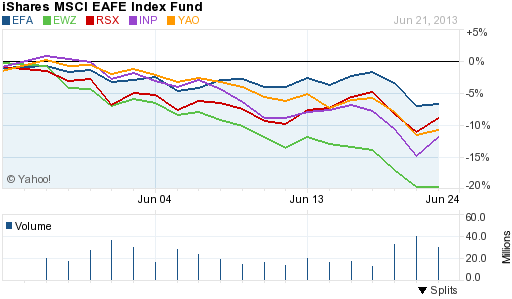The Basics Of Municipal Bonds Bonds Market Dhara Web Site
Post on: 23 Июль, 2015 No Comment

Home Bonds The Basics Of Municipal Bonds
1/9/2012 1:07:15 AM
Administrator
Posts: 562
If your primary investing objective is to preserve your capital while generating a tax-free income stream, municipal bonds are worth considering. Municipal bonds (munis) are debt obligations issued by government entities. When you buy a municipal bond, you are loaning money to the issuer in exchange for a set number of interest payments over a predetermined period. At the end of that period, the bond reaches itsmaturity date. and the full amount of your original investment is returned to you.
While municipal bonds are available in both taxable and tax-exempt formats, the tax-exempt bonds tend to get the most attention because the income they generate is for most investors exempt from federal and, in many cases, state and local income taxes. Investors subject to the alternative minimum tax (AMT) must include interest income from certain munis when calculating the tax, and should consult a tax professional prior to investing (For more, see Weighing The Tax Benefits of Municipal Bonds ).
Two Varieties
Municipal bonds come in the following two varieties:
general obligation bonds (GO) revenue bonds
General obligation bonds, issued to raise immediate capital to cover expenses, are supported by the taxing power of the issuer. Revenue bonds, which are issued to fund infrastructure projects, are supported by the income generated by those projects. Both types of bonds are tax exempt and particularly attractive to risk-averse investors due to the high likelihood that the issuers will repay their debts.
Risk Factors
While buying municipals bonds is viewed as a conservative investment strategy, it is not risk-free. The following are the risk factors:
Credit Risk. If the issuer is unable to meets its financial obligations, it may fail to make scheduled interest payments and/or be unable to repay the principal upon maturity. To assist in the evaluation of an issuer’s creditworthiness, ratings agencies, such as Moody’s Investors Service and Standard & Poor’s analyze a bond issuer’s ability to meet its debt obligations, and issue ratings from ‘Aaa’ or ‘AAA’ for the most creditworthy issuers to ‘Ca’, ‘C’, ‘D’, ‘DDD’, ‘DD’ or ‘D’ for those in default. Bonds rated ‘BBB’, ‘Baa’ or better are generally considered appropriate investments when capital preservation is the primary objective. To reduce investor concern, many municipal bonds are backed by insurance policies guaranteeing repayment in the event of default.
Interest-Rate Risk . The interest rate of most municipal bonds is paid at a fixed rate. The rate does not change over the life of the bond. If interest rates in the marketplace rise, the bond you own will be paying a lower yield relative to the yield offered by newly issued bonds.
Tax-Bracket Changes: Municipal bonds generate tax-free income, and therefore pay lower interest rates than taxable bonds. Investors who anticipate a significant drop in their marginal income-tax rate may be better served by the higher yield available from taxable bonds. (To learn more, see Weighing the Tax Benefits of Municipal Securities .)
Call Risk: Many bonds allow the issuer to repay all or a portion of the bond prior to the maturity date. The investor’s capital is returned with a premium added in exchange for the early debt retirement. While you get your entire initial investment plus some back if the bond is called, your income stream ends earlier than you were expecting it to.
Market Risk: The underlying price of a particular bond changes in response to market conditions. When interest rates fall, newly issued bonds will pay a lower yield than existing issues, which makes the older bonds more attractive. Investors who want the higher yield may be willing to pay a premium to get it. Likewise, if interest rates rise, newly issued bonds will pay a higher yield than existing issues. Investors who buy the older issues are likely to do so only if they get it at a discount. If you buy a bond and hold it until maturity, market risk is not a factor because your principal investment will be returned in full at maturity. Should you choose to sell prior to the maturity date, your gain or loss will be dictated by market conditions, and the appropriate tax consequences for capital gains or losses will apply.
The most basic strategy for investing in municipal bonds is to purchase a bond with an attractive interest rate, or yield, and hold the bond until it matures. The next level of sophistication involves the creation of a municipal bond ladder. A ladder consists of a series of bonds, each with a different interest rate and maturity date. As each rung on the ladder matures, the principal is reinvested into a new bond. Both of these strategies are categorized as passive strategies because the bonds are bought and held until maturity. (For related reading, see The Basics Of The Bond Ladder )
Investors seeking to generate both income and capital appreciation from their bond portfolio may choose an active portfolio management approach whereby bonds are bought and sold instead of held to maturity. This approach seeks to generate income from yields and capital gains from selling at a premium.
Are Municipal Bonds Right For You?
Investing in municipal bonds can have a long-term impact on your income stream and your portfolio. To learn more about the benefits of municipal bonds, contact an investment professional or thoroughly research them yourself before investing your money














